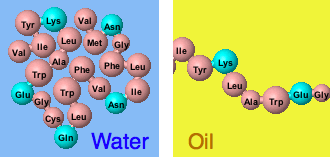Sandbox WWC1
From Proteopedia
(Difference between revisions)
| Line 2: | Line 2: | ||
Botulinum Toxin is a protein most known for causing the potentially fatal illness botulism. The protein is produced by three species of bacterium, primarily ''Clostridium botulism'', but is also produced by ''Clostridium baratii'' and ''Clostridium butyricum''. ''Clostridium botulism'' is commonly found in soil, marine sediments, and the gut of grazing animals. When exposed to humans through inhalation, ingestion, or surface wounds, the botulinum toxin acts as a neurotoxin. | Botulinum Toxin is a protein most known for causing the potentially fatal illness botulism. The protein is produced by three species of bacterium, primarily ''Clostridium botulism'', but is also produced by ''Clostridium baratii'' and ''Clostridium butyricum''. ''Clostridium botulism'' is commonly found in soil, marine sediments, and the gut of grazing animals. When exposed to humans through inhalation, ingestion, or surface wounds, the botulinum toxin acts as a neurotoxin. | ||
| - | [[Image:Botulism1and2.jpg]] | ||
<Structure load='1pgb' size='350' frame='true' align='right' caption='Insert caption here' scene='1pgb' /> | <Structure load='1pgb' size='350' frame='true' align='right' caption='Insert caption here' scene='1pgb' /> | ||
Revision as of 12:13, 14 April 2016
Background
Botulinum Toxin is a protein most known for causing the potentially fatal illness botulism. The protein is produced by three species of bacterium, primarily Clostridium botulism, but is also produced by Clostridium baratii and Clostridium butyricum. Clostridium botulism is commonly found in soil, marine sediments, and the gut of grazing animals. When exposed to humans through inhalation, ingestion, or surface wounds, the botulinum toxin acts as a neurotoxin.
|
Let us color the N to C terminus accordingly. The N terminus appears in blue while the C terminus is red.
| Amino Terminus | Carboxy Terminus |
|

